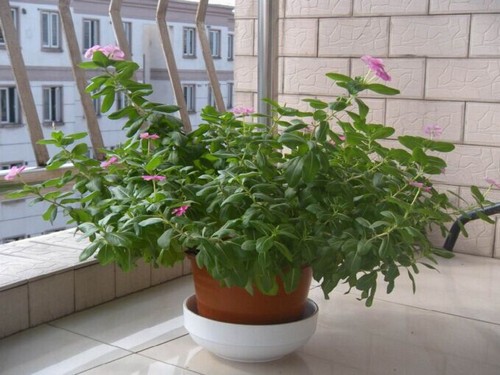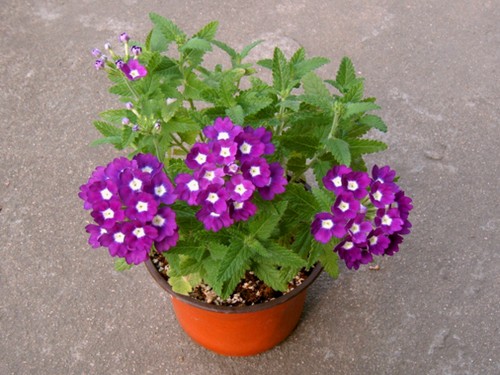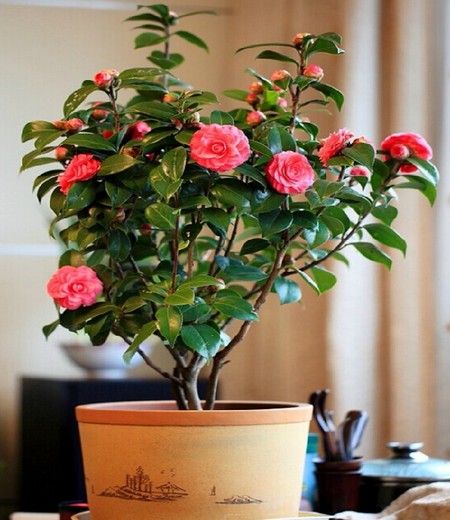Planting and cultivation techniques of Bauhinia
The bauhinia tree is tall, the first leaves bloom, showing purplish red, shaped like a butterfly, covered with branches, in full bloom in summer, cultivated and ornamental, it is enjoyable. Su Songyun: "Bauhinia is everywhere, there are many kinds of people in the courtyard, the wood is like bauhinia, the leaves are small, and the flowers are dark purple and lovely." Bauhinia is the flower of deciduous leguminous trees or small shrubs. Branchlets glabrous, with many lenticels; simple leaves alternate, leaf blade suborbicular, base deeply cordate: flowers first leaves open, 4 murmur10 flowers clustered on old branches, calyx campanulate, Corolla butterfly-shaped, purplish red, petals 5, different sizes: pods flat band, purplish red. Flowering in May. Born in the mountains or cultivated in the courtyard, it is distributed in most parts of the country. It is harvested and dried in the flowering period, and the bark and fruit are also used as medicine.

Transplanting: generally, the seedling stage can be transplanted in about 90 days. When transplanting, it is best to choose cloudy and rainy days, apply farm manure 1000kg to 1500kg per mu, plant spacing is 1.2 m × 1.5 m, and drench root water.
Bauhinia can be transplanted from November to December after defoliation every year or before germination from February to April of the following year. Large plants should be transplanted with soil balls to facilitate survival. Because of the great toughness of the root system, it is not easy to dig off, so part of the root system can be shoveled off with a sharp shovel, and some longer branches should be properly cut short to facilitate carrying and transportation. If you transplant at flowering stage, you should also remove some flowers to avoid consuming too many nutrients and affecting survival. When planting, it is better to apply rotten compost to each hole.
Watering: after the end of cutting or sowing, drench with water, drench once in the morning and evening on a sunny day within a month, and pay attention to drainage and waterlogging prevention on rainy days.
Bauhinia should be ploughed at the right time during the growing period to loosen the topsoil, reduce water evaporation, circulate the air in the soil, promote the decomposition of nutrients, and create good conditions for root growth and nutrient absorption. Pay attention to watering during drought and timely drainage and waterlogging in the rainy season, so as not to cause rotten roots due to stagnant water in the soil. Mature organic fertilizer is applied once a year in early spring, summer and autumn to promote flowering and flower bud formation. After each fertilization, water should be irrigated once to facilitate root absorption.
Bauhinia likes the humid environment. It should be watered immediately after planting, second water on the third day, three water on the sixth day, and watering according to the weather conditions after the third day. It is appropriate to keep the soil moist. Timely watering in summer, and leaf spray, timely drainage after rain to prevent water rotting roots. After entering autumn, if the temperature is not high, watering should be controlled to prevent autumn hair. Pour enough antifreeze water before winter. The green water was watered back in early March of the following year. Except for the precipitation in July and August, it was watered once from April to October, and anti-freezing water was poured before winter. The same method was used in the third year and entered the normal management in the fourth year, but the antifreeze water and green water should be watered thoroughly. If conditions permit, irrigate once in mid-late April and late September, and grow reliably in other seasons. Some people think that Bauhinia is resistant to drought and afraid of flooding. in fact, Bauhinia likes a humid environment but cannot grow in stagnant water.
Fertilization: after cutting sprouting or sowing seedlings, spray it with 1000 times of potassium dihydrogen phosphate or clear fecal water every 15 days, and do a good job of weeding.
Bauhinia like fat, fat foot is luxuriant branches and leaves, colorful flowers, lack of fertilizer, sparse branches and leaves, few flowers and light colors. It is better to apply sufficient base fertilizer when planting, with rotten leaf fertilizer, ring fertilizer or dried chicken manure, and mix well with the planting soil before use, otherwise the root system will be burned. After normal management, nitrogen fertilizer is applied once a year after flowering to promote vigorous growth. the application of phosphorus and potassium compound fertilizer in early autumn is conducive to flower bud differentiation and new branches to survive the winter safely after Lignification. Early winter combined with frozen water, the application of cattle and horse manure. Poor plant growth can be foliar sprayed with 0.2% potassium dihydrogen phosphate solution and 0.5% urea solution.
Pruning: the bauhinia tree is resistant to pruning and can cut off disease and insect branches, cross branches and overlapping branches after defoliation in winter and before sprouting in spring, so as to maintain the beauty of the tree. As the old branches of the plant can also blossom, so do not cut too much of the old branches when pruning, otherwise it is bound to affect the number of flowers. The sprouting power of Bauhinia is strong, especially at the base, it is easy to sprout tillering buds. These buds should be cut off in time to maintain the beauty of the tree shape and avoid consuming too many nutrients. If you do not leave seeds after flowering, pay attention to remove the pods, so as not to consume too much nutrients, which is disadvantageous to growth.
Plastic surgery: bauhinia is often used as a bush in gardens, so pruning should be strengthened from the beginning of seedling tending in order to form a good plant shape. After transplanting, the seedlings can be light and short, promote its multiple branches, expand the vegetative area, accumulate nutrients and develop the root system. The next spring can be heavy cut, make it sprout new branches, choose the better growth of 3 branches to retain, the rest all cut off. Strengthen the management of water and fertilizer during the growing period and pick the heart of the branches left behind. After planting, the multiple sprouting should be removed in time, the tending of the branches left in the first year should be strengthened, and more heart-picking treatment should be carried out in order to produce more secondary branches.
The renewal of flowering branches should be strengthened in cultivation. Practice has proved that more than 5 years of old branches, the amount of flowers is less and the flower buds move up, affecting the ornamental, so it should be updated in time.
Time: 2019-05-25 Click:
- Prev

Planting method of Beauty Sakura
Beautiful cherry is a perennial herbaceous flower of Verbenaceae, which is often cultivated for one or two years. The plant is about 20 cm tall, the branches are extroverted, grape-shaped, the branches are densely flowered, the spikes are terminal, but the flowering parts are corymbose, the flowers are white, red, blue, snow blue, pink, etc., the florescence is from May to November, and the sex is very strong.
- Next

Planting method of hibiscus flower
Hibiscus is a traditional famous flower in China, which has been cultivated for nearly 3000 years. Hibiscus is a common deciduous shrub or small tree with strong adaptability. It is suitable for planting in north and south. It is semi-shade-tolerant, cold-resistant and semi-drought-tolerant. It usually grows well in moist soil. Strong sprouting and resistance to pruning
Related
- Fuxing push coffee new agricultural production and marketing class: lack of small-scale processing plants
- Jujube rice field leisure farm deep ploughing Yilan for five years to create a space for organic food and play
- Nongyu Farm-A trial of organic papaya for brave women with advanced technology
- Four points for attention in the prevention and control of diseases and insect pests of edible fungi
- How to add nutrient solution to Edible Fungi
- Is there any good way to control edible fungus mites?
- Open Inoculation Technology of Edible Fungi
- Is there any clever way to use fertilizer for edible fungus in winter?
- What agents are used to kill the pathogens of edible fungi in the mushroom shed?
- Rapid drying of Edible Fungi

